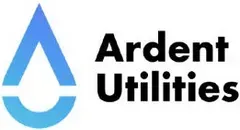Blog
Insights and Innovations: Exploring the World of Water Solutions

About Lead Pipes
You've most likely heard a lot about lead in water, and you're probably wondering how you can tell if you have a problem. If your home was built before 1970, and has not already had their pipework replaced, you will likely still have a lead supply.
Read on to learn more about the health consequences of lead exposure, and how to reduce lead in drinking water.
Health Consequences Of Lead Exposure
Lead can be hazardous to your health - and can be especially hazardous to children. It has the potential to harm the brain and kidneys, as well as to interfere with the production of red blood cells, which transport oxygen throughout the body. Lead causes behavioural and physical effects in children at lower exposure levels than adults, which is why infants, foetuses, and young children are especially vulnerable to lead.
The vast majority of children and adults that have been exposed to lead show no symptoms. Contact your healthcare provider if you believe you or your child has been exposed to lead in water. A blood lead test is the most accurate way to determine this.
How To Check If You Use Lead Pipes
Examine the pipe running towards your property by opening the flap of your outside stop valve.
Examine the colour: Lead pipes that have not been painted are a dull grey.
Examine the joints: Where two pipes meet, lead joints are rounded and swollen.
Gently scratch the pipe: Scratches on lead pipes reveal a gleaming silver metal.
Does a magnet adhere? If that's the case, it's made of steel.
With a metal object, tap the lead pipe: Lead pipes produce a dull thud rather than the clear ringing of copper or iron pipes.
Common Ways To Reduce Lead In Drinking Water
One common way to reduce lead in drinking water is running your water. Flush the pipe before drinking by running the water, taking a shower, doing laundry, or doing a load of dishes.
Keep in mind that boiling water does not remove lead from water. If you use a filter, ensure that's is certified to remove lead. Read instructions to learn how to install and use your cartridge correctly and when to replace it.
Replacement Scheme
The health risks of having lead in your water make it necessary to replace lead pipes in your home. If you have a shared supply pipe, you and your neighbours can agree to replace the entire supply pipe together.
Suppose your neighbours refuse to contribute to replacing the shared supply pipe. In that case, you can install a new single supply pipe from your property to where the old lead supply connects to the communication pipe. Always contact your local Water Board in order to confirm if they have any lead replacement schemes running so that thy can replace the public side of the pipework.
If you have any further queries about lead pipes, read our guide on whether lead pipes rust.
The Best In the North West
Ardent Utilities: Direct Solutions, Proven Results

Contact Us
0800 009 2964
Unit 5 SMM Business Park, Dock Road, Birkenhead Wirral CH41 1DT